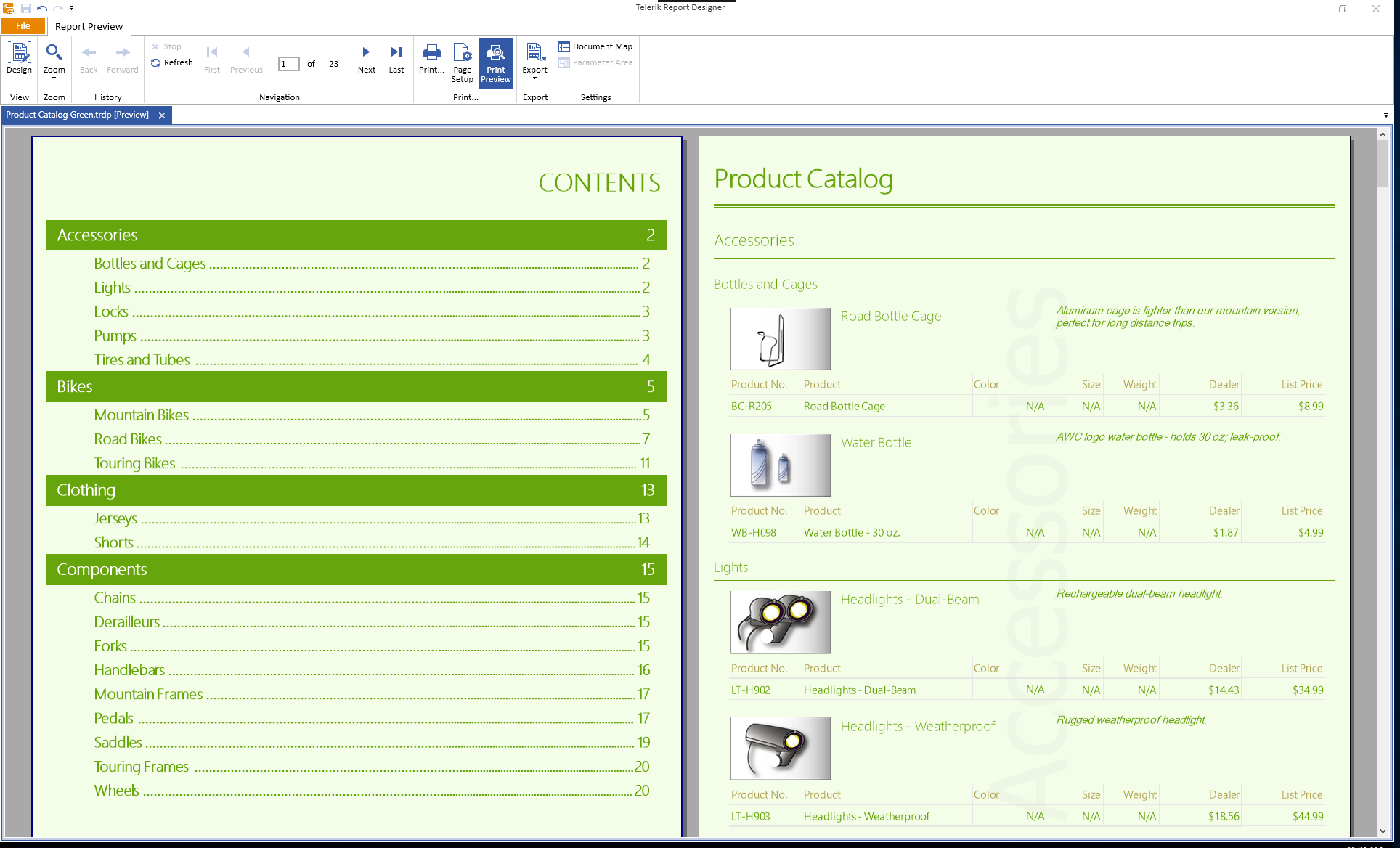Reporting R3 2016 Arrives Packed with New Features
We unveil a host of upgrades in the R3 2016 Reporting release, including improved security, a new table of contents, custom actions, performance boosts and more.
After two beta releases, the R3 2016 release of Telerik Reporting is ready for prime time. We would like to thank everyone who participated in our beta program and have tried the new features.
In addition to all of the features we introduced with the betas, in this official release we now introduce a built-in Table of Contents and improved ObjectDataSource security.
Built-in Table of Contents
Insert an interactive Table of Contents at the beginning or at the end of a report. It will allow the user to navigate to the respective report page location when a TOC item is clicked, and will be available in all report viewers, and in all export formats which support table of contents, such as PDF and Word. The TOC is added like report sections from the report context menu, and supports different style formatting and leader symbols for every TOC level.

Improved ObjectDataSource Security
We have improved the ObjectDataSource security so now it can resolve only types that are declared either in the current report's assembly or in the application configuration file. The ObjectDataSource wizard will add the configuration automatically in the current project configuration files. Note that for updated projects you have to manually add the configuration (for more information check out the following help article).
Now even when XML-based report definitions (TRDP or TRDX) are shared over insecure connection, they are still secure from "man in the middle" attacks that may alter the report definition with harmful code.
Custom Interactivity Actions
You are now able to invoke custom logic upon clicking on a particular report item from within the report viewers. That functionality comes via a new custom action to propagate report data and viewers events, which react based on the report action context.
This way you can implement tooltips with custom UI and text based on the report data.

PDF Security
Some PDFs are intended to be confidential. And if you want to protect a report rendered in PDF, we now support native password-protected encryption with owner and optional user passwords to secure the rendered PDF reports. This feature is enabled with a simple device setting for the owner and user passwords. Thus you can provide the passwords in the application configuration file or prior to rendering handling the appropriate viewer event or service virtual method.
Private Fonts
No more need to worry about installing fonts on the server, cloud instance or the available fonts on the client computer. Now you can use any font without installing it on the hosting environment. We support Private Fonts in all rendering extensions and all such supporting technology viewers.
Printing on Continuous Paper
We have added support for Continuous Paper, so you can use all types of printers, including matrix printers with an endless feed.
CanShrink
A CanShrink property for the panel and the report section container items is now available. When enabled, if the container’s content is hidden or shrunk, the container will collapse accordingly—while still keeping the required inter-item space.
Better Precision
Rendering hundreds of pages in a report may cause an accumulation of floating point errors, which results in an unexpected layout. In order to avoid this now the reporting layout engine works with discrete precision of 10 micrometers.
Improved Performance
In our constant quest for faster report rendering, in this release we have improved the overall performance up to 25% in all supported document formats.
New Viewers Events
Sometimes you may want to modify the rendered document prior to serving it to the viewers’ client. For example, now you can sign the reports before delivering them. This is supported in all desktop report viewers and REST services.
Sacrificed Bugs
All those new features didn’t distract us from our goal to seek and destroy all bugs. For information on the casualties check out the release notes.

Petar Raykov
Petar Raykov is a Software Developer in the Telerik Reporting division. He has been working on Telerik products since 2010. Off work he enjoys traveling, hanging out with friends and reading.
